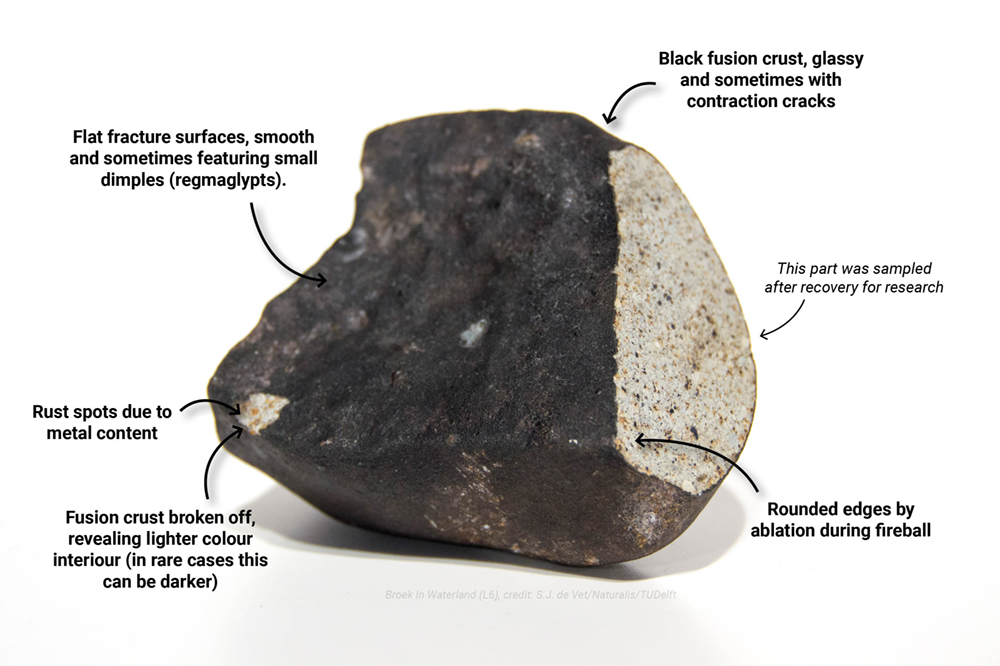When we detect a possible meteorite fall with the FRIPON network, a team of local experts meets with the FRIPON PI to discuss the search and recovery strategy. If you found something in connection to a recent fireball event, or after announcements via local press or social media, please use the information below on how to handle possible meteorite finds. These handling procedures are meant to preserve the scientific qualities of a fresh meteorite by preventing contamination after they land on Earth.
Meteorite or MeteorWrong?
A key property that can help you recognise a possible meteorite is a thin black layer known as the fusion crust. It is created during the fiery passage through the atmosphere as a fireball. When part of the crust is broken off a meteorite often shows a different colour interior, mostly light grey. These fusion-crusted meteorites are not always round and can have shapes with flat faces due to fracturing, rounded edges and smoothing of its surface. The presence of metal flakes in some rocky meteorites can create rust spots and stain the rock brown.

Figure 1 Features of freshly fallen meteorite, illustrated using the stony meteorite Broek in Waterland (L6). Credit: Naturalis/TU Delft/S.J. de Vet.
Meteorite identification is not an easy and straightforward task, considering the large variety of manmade and natural materials that might resemble certain properties of meteorites. A useful reference is the profusely illustrate website of Washington State University. Alternatively you can browse some of the virtual 3D models from the Delft Meteorite Lab. There are various institutions and scientists linked to FRIPON that can help you with assessing your find. Note that the authenticity of a meteorite can only be established based on characteristics that may require additional scientific measurements.
I think I found a meteorite, what should I do?
Document your find on the place where you found it by taking images of the object with a scale reference (e.g. key, coin, ruler) and use the GPS of your smartphone to record the exact position. An accessible and inexpensive way to handle freshly fallen meteorites is using a piece of aluminum foil. Take a piece of foil and use it to pick up the meteorite. Make sure it is large enough and gently fold the foil around the meteorite. Seal the wrapped meteorite it inside a zip-lock bag to keep it clean and dry. Alternatively, powder-free gloves and metal tongs can also be used. If you collected a meteorite from the soil, please also sample a bit of the soil it contacted. Scientist can later use it to establish the presence of possible contamination from soil compounds (relevant for e.g. rare carbonaceous meteorites).
Things to avoid doing
Avoid handling freshly fallen meteorites with your bare hands. Salts, oils and microorganisms on your fingers can contaminate a meteorite and promote rusting. Also, do not perform tests using a magnet if you found a possible meteorite in connection to a recent fireball event or in the search area announced in the press or social media. Magnets will erase the minute magnetic properties that are very valuable for scientific studies.
Who to contact
FRIPON is an international consortium consisting of many institutions and scientists that can help you with a possible meteorite find. Contact the national coordinator of the FRIPON network in your country, who can direct you to a suitable point of contact. Their contact details can be found on the respective country webpages at our website FRIPON.org.
